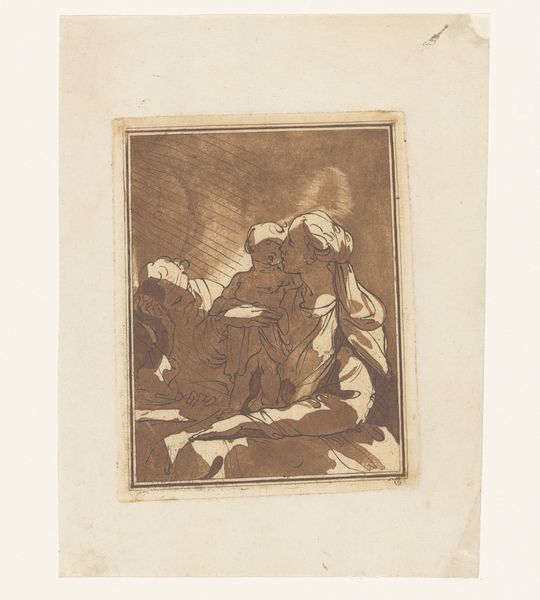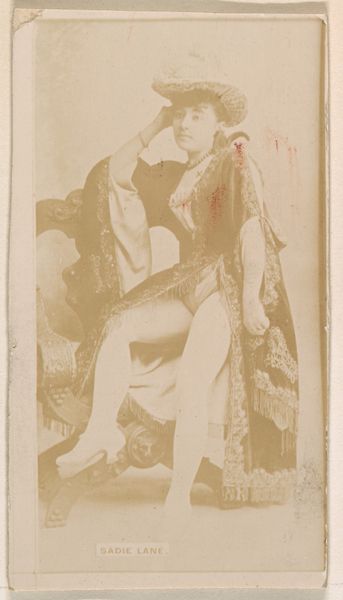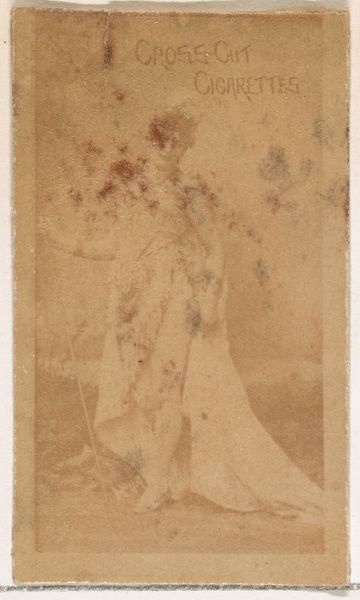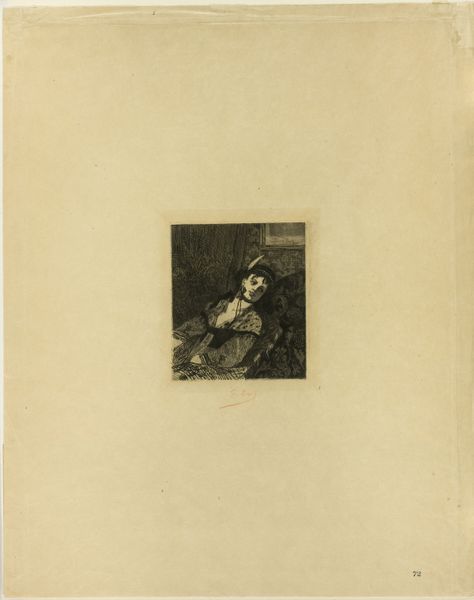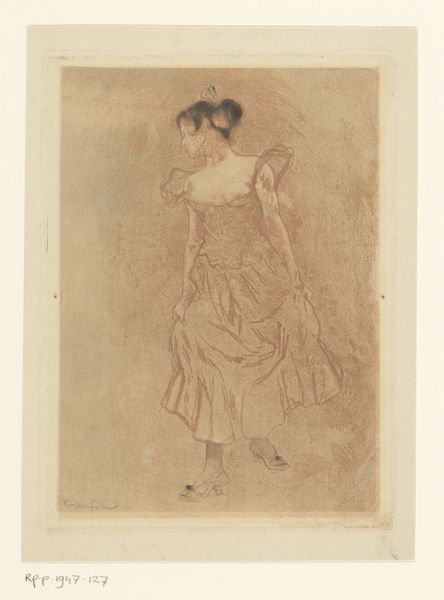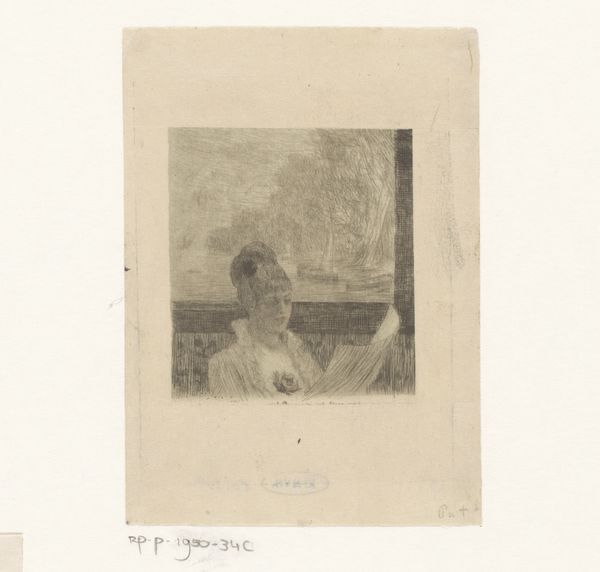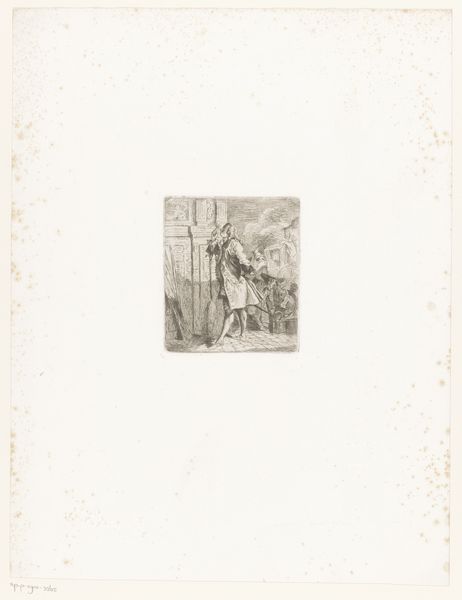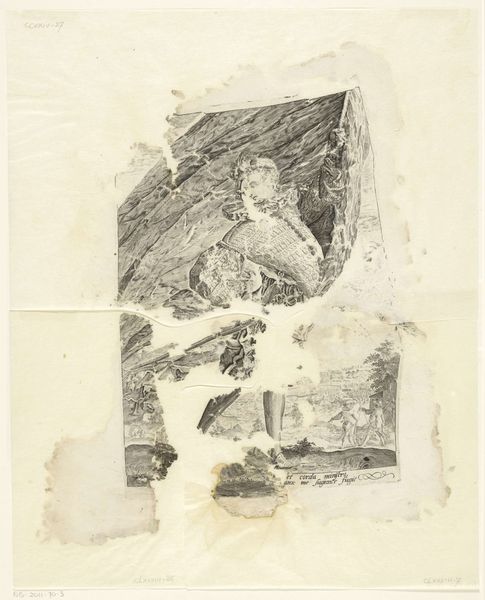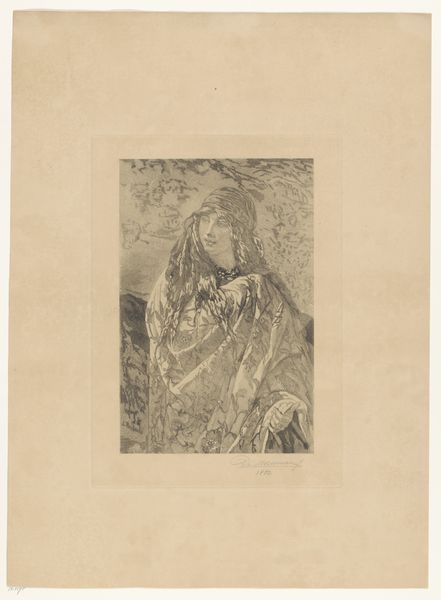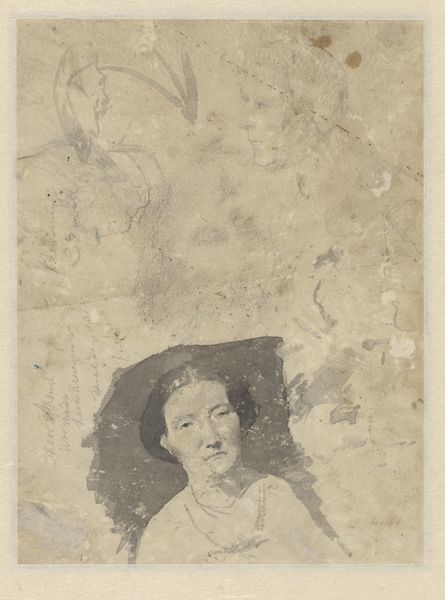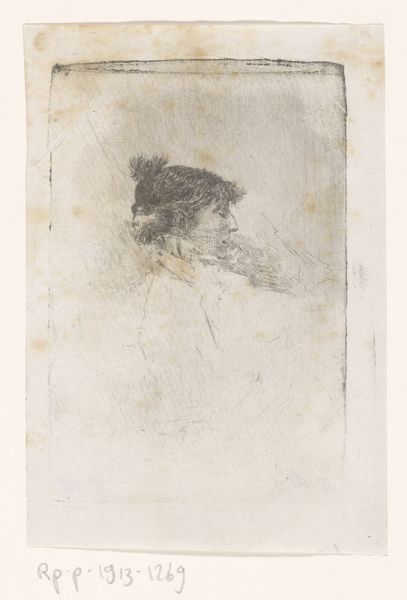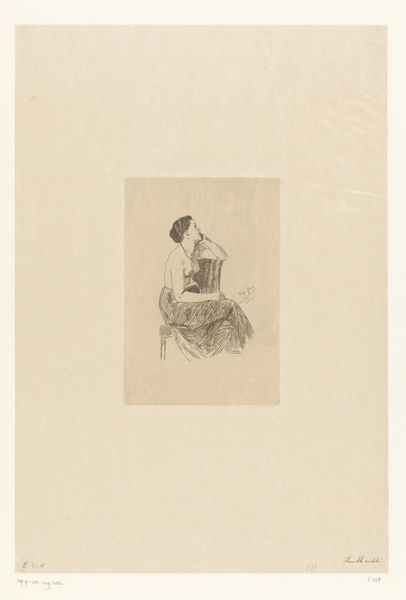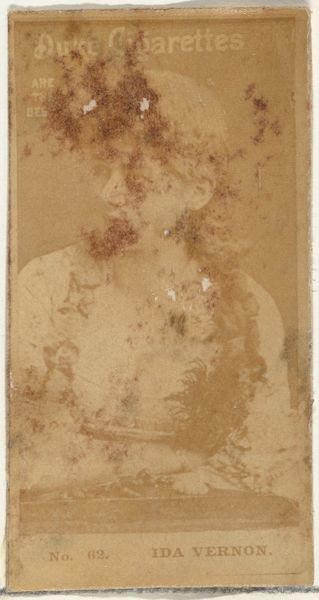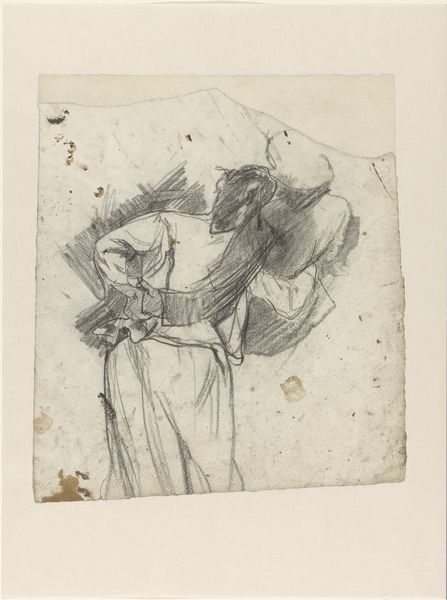
Copyright: Public Domain
Curator: This gelatin-silver print, titled "La Coucher", was captured by Pierre-Louis Pierson sometime in the 1860s. It's now part of the Metropolitan Museum of Art's collection. Editor: There's a distinct softness to it; almost as though the subject is emerging from a dream or fading into one. Curator: Yes, the tonal range is very subtle. Note how the photographer employed soft focus. It renders the subject—we presume, a woman—ethereal. Editor: I see echoes of the Romantic period, with its emphasis on emotion, reverie and the symbolic importance of light and darkness. That loosely draped fabric could represent the divide between wakefulness and sleep. Curator: Precisely. One might consider it from the perspective of pictorialism, where photographic techniques imitate painting. It evokes allegorical themes but remains decidedly modern with the emerging technology. Look at the composition. It lacks the rigid symmetry typical of classical portraiture. Editor: And her gaze is averted, adding to the air of mystery and inviting our speculation about her inner state. Perhaps a symbol for how quickly time passes? I can feel my heart swelling with tenderness when looking at this subject. Curator: Indeed, and the gentle gradient shifts draw the eye upwards and also convey that specific, delicate movement that seems almost musical, especially within her dress' shape; but from my angle, this feels as if Pierson explored and then perfected the subtleties possible when mixing art with technology as photography progressed into becoming widely popular back during these early times! Editor: It's quite beautiful how he conveys mood and psychological insight into his female model within merely soft sepia gradients. And it holds great visual appeal, creating within such tones various possibilities which will always offer moments to those viewers whom engage carefully enough for any individual person within our culture these days-- even despite many technological improvements overall. Curator: Indeed, seeing it through the lens of composition, line, and tonality brings us closer to grasping his aesthetic vision, which remains relevant, even today! Editor: A lovely exploration which made our appreciation for beauty accessible thanks much today together both ways indeed—truly special within history regardless how brief compared all.
Comments
No comments
Be the first to comment and join the conversation on the ultimate creative platform.
